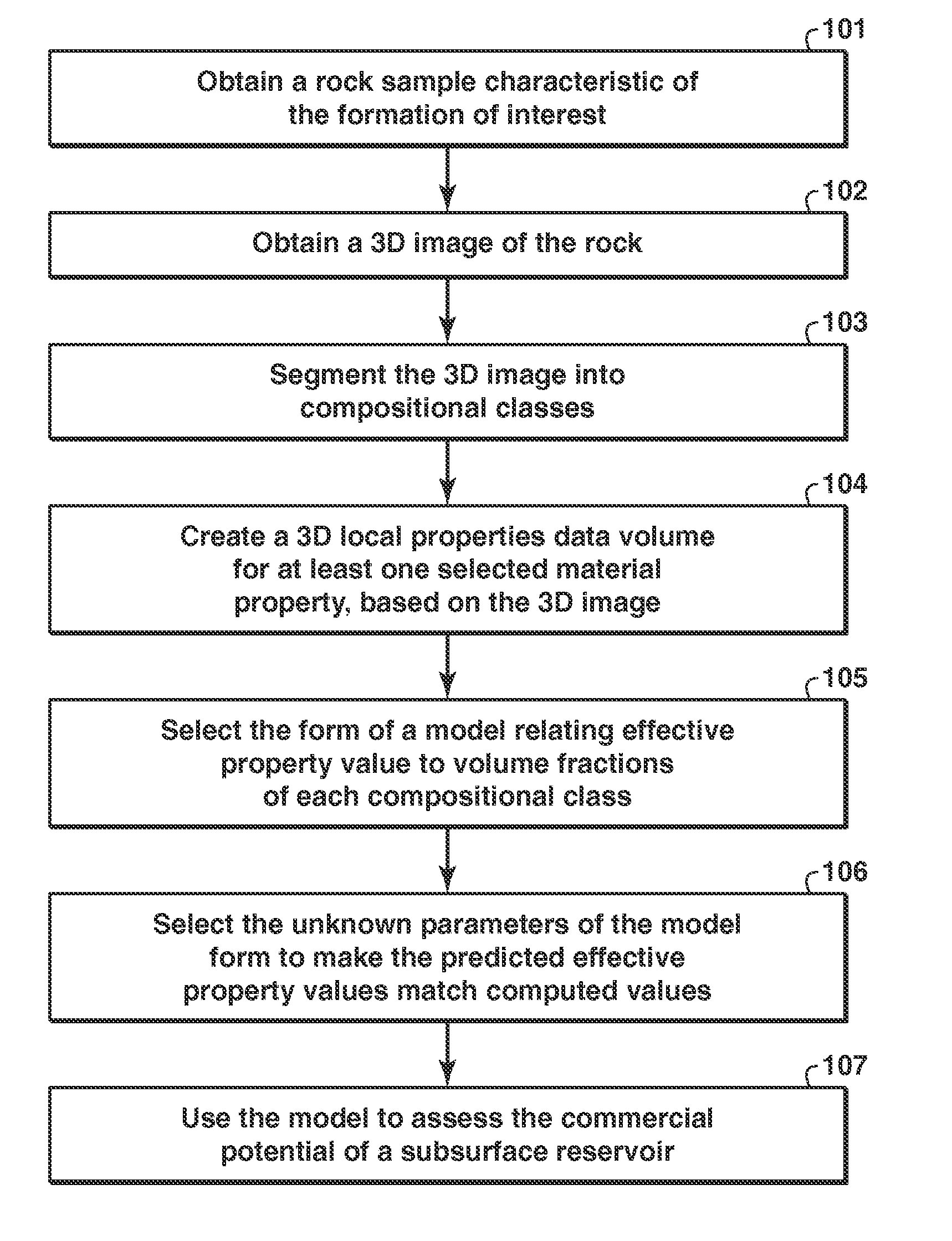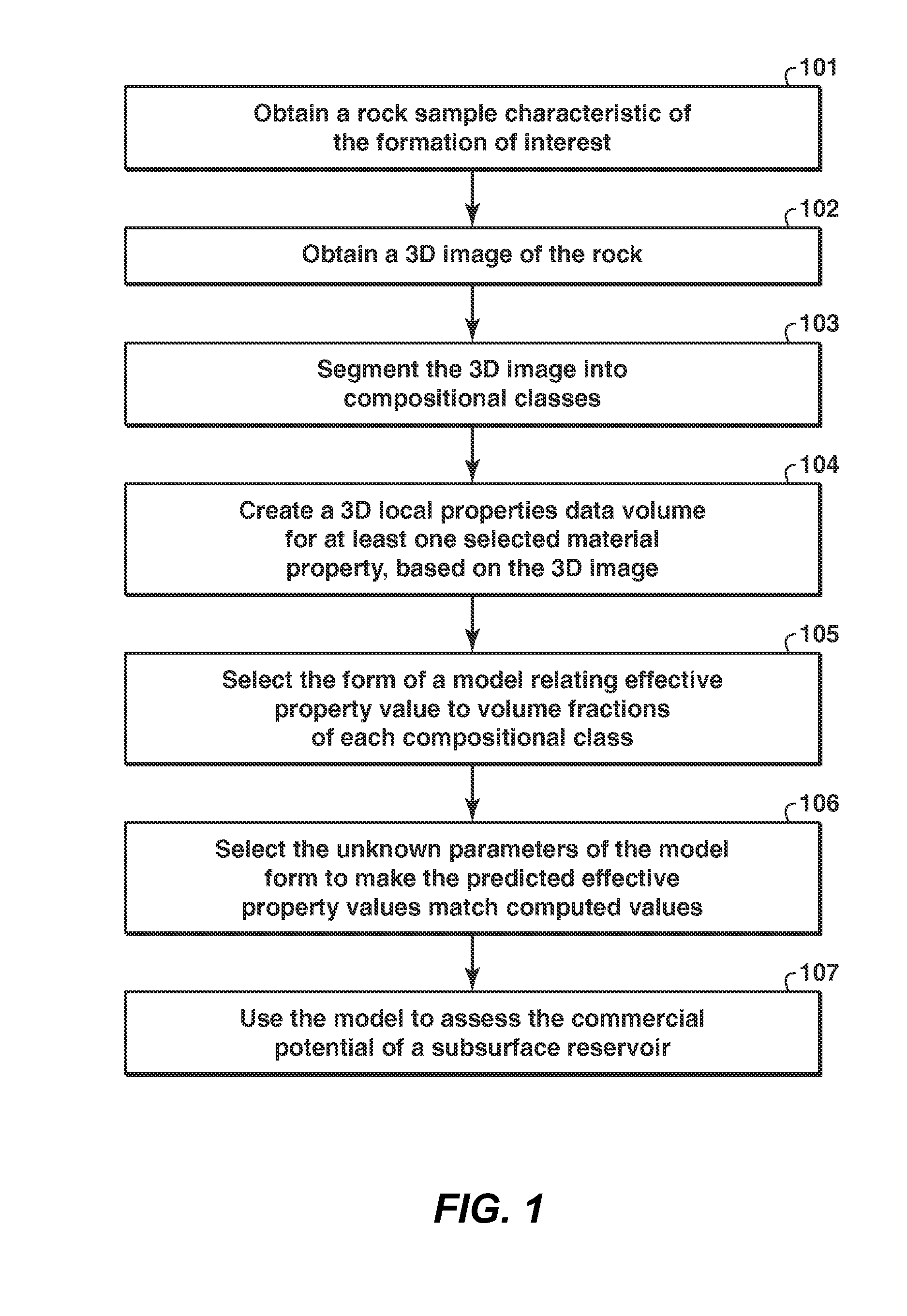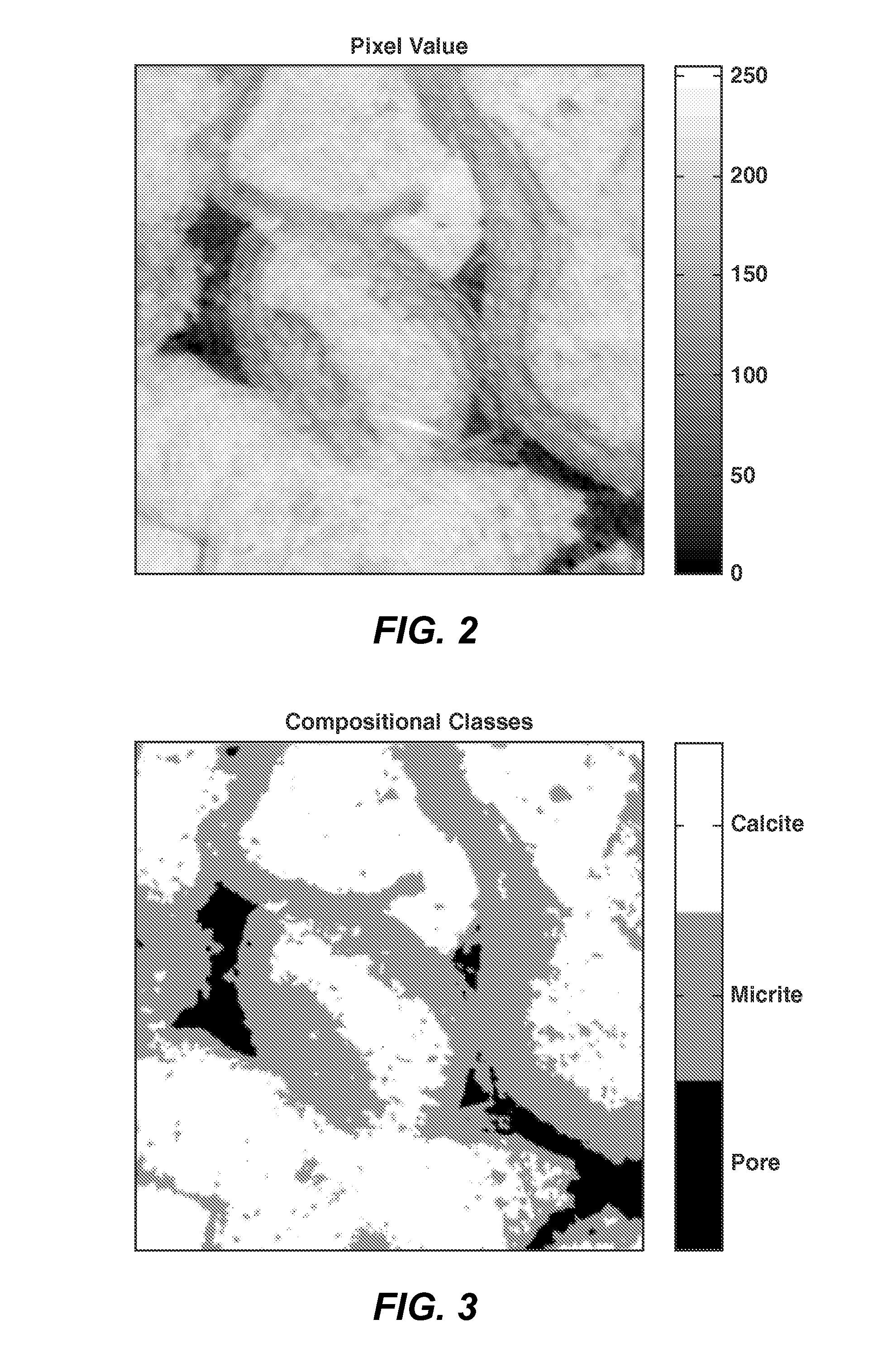Method for determining the properties of hydrocarbon reservoirs from geophysical data
a hydrocarbon reservoir and geophysical data technology, applied in the field of geophysical prospecting, can solve the problems of complex relationship between elastic inability of empirical methods to resolve their separate contributions, and inability to solve the relationship between electrical properties and volume fractions of compositional classes in rocks
- Summary
- Abstract
- Description
- Claims
- Application Information
AI Technical Summary
Benefits of technology
Problems solved by technology
Method used
Image
Examples
Embodiment Construction
[0028]The present invention is a method for determining relationships for use in hydrocarbon exploration among seismic, electrical, and reservoir properties of a subsurface rock formation. The inventive method allows these relationships to be determined using as few as one rock sample. For a selected property of interest, the inventive method determines a model relating the effective property value to the volume fractions of the compositional classes in the rock. To do this, a 3D image of the rock sample is obtained and segmented into compositional classes. A mapping is determined that converts the 3D image into a local properties volume, specifying the local value of the property of interest at each pixel location. An effective medium model is selected that will ultimately relate the volume fractions of each compositional class to the effective property value for rocks having similar structure to the sample. Such models typically have unknown parameters that must be calibrated usin...
PUM
 Login to View More
Login to View More Abstract
Description
Claims
Application Information
 Login to View More
Login to View More - R&D
- Intellectual Property
- Life Sciences
- Materials
- Tech Scout
- Unparalleled Data Quality
- Higher Quality Content
- 60% Fewer Hallucinations
Browse by: Latest US Patents, China's latest patents, Technical Efficacy Thesaurus, Application Domain, Technology Topic, Popular Technical Reports.
© 2025 PatSnap. All rights reserved.Legal|Privacy policy|Modern Slavery Act Transparency Statement|Sitemap|About US| Contact US: help@patsnap.com



